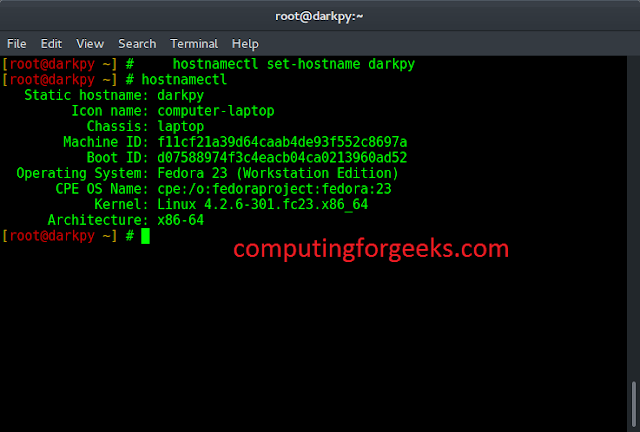Degree
In graph theory, the degree (or valency) of a vertex of a graph is the number of edges incident to the vertex, with loops counted twice.[1] The degree of a vertex is denoted
or
. The maximum degree of a graph G, denoted by
(G), and the minimum degree of a graph, denoted by
(G), are the maximum and minimum degree of its vertices. In the graph on the right, the maximum degree is 5 and the minimum degree is 0. In a regular graph, all degrees are the same, and so we can speak of the degree of the graph.
Degree Centrality
Historically first and conceptually simplest is degree centrality, which is defined as the number of links incident upon a node (i.e., the number of ties that a node has). The degree can be interpreted in terms of the immediate risk of a node for catching whatever is flowing through the network (such as a virus, or some information). In the case of a directed network (where ties have direction), we usually define two separate measures of degree centrality, namely indegree and outdegree. Accordingly, indegree is a count of the number of ties directed to the node and outdegree is the number of ties that the node directs to others. When ties are associated to some positive aspects such as friendship or collaboration, indegree is often interpreted as a form of popularity, and outdegree as gregariousness.
The degree centrality of a vertex , for a given graph
with
vertices and
edges, is defined as
Calculating degree centrality for all the nodes in a graph takes in a dense adjacency matrix representation of the graph, and for edges takes
in a sparse matrix representation.
The definition of centrality on the node level can be extended to the whole graph, in which case we are speaking of graph centralization. Let be the node with highest degree centrality in
. Let
be the
node connected graph that maximizes the following quantity (with
being the node with highest degree centrality in
):
Correspondingly, the degree centralization of the graph is as follows:
The value of is maximized when the graph
contains one central node to which all other nodes are connected (a star graph), and in this case
.
Following is the code for the calculation of the degree centrality of the graph and its various nodes.
import networkx as nx def degree_centrality(G, nodes): r"""Compute the degree centrality for nodes in a bipartite network. The degree centrality for a node `v` is the fraction of nodes connected to it. Parameters ---------- G : graph A bipartite network nodes : list or container Container with all nodes in one bipartite node set. Returns ------- centrality : dictionary Dictionary keyed by node with bipartite degree centrality as the value. Notes ----- The nodes input parameter must contain all nodes in one bipartite node set, but the dictionary returned contains all nodes from both bipartite node sets. For unipartite networks, the degree centrality values are normalized by dividing by the maximum possible degree (which is `n-1` where `n` is the number of nodes in G). In the bipartite case, the maximum possible degree of a node in a bipartite node set is the number of nodes in the opposite node set [1]_. The degree centrality for a node `v` in the bipartite sets `U` with `n` nodes and `V` with `m` nodes is .. math:: d_{v} = \frac{deg(v)}{m}, \mbox{for} v \in U , d_{v} = \frac{deg(v)}{n}, \mbox{for} v \in V , where `deg(v)` is the degree of node `v`. """ top = set(nodes) bottom = set(G) - top s = 1.0/len(bottom) centrality = dict((n,d*s) for n,d in G.degree_iter(top)) s = 1.0/len(top) centrality.update(dict((n,d*s) for n,d in G.degree_iter(bottom))) return centrality |
The above function is invoked using the networkx library and once the library is installed, you can eventually use it and the following code has to be written in python for the implementation of the Degree centrality of a node.
import networkx as nx G=nx.erdos_renyi_graph(100,0.5) d=nx.degree_centrality(G) print(d) |
The result is as follows:
{0: 0.5252525252525253, 1: 0.4444444444444445, 2: 0.5454545454545455, 3: 0.36363636363636365,
4: 0.42424242424242425, 5: 0.494949494949495, 6: 0.5454545454545455, 7: 0.494949494949495,
8: 0.5555555555555556, 9: 0.5151515151515152, 10: 0.5454545454545455, 11: 0.5151515151515152,
12: 0.494949494949495, 13: 0.4444444444444445, 14: 0.494949494949495, 15: 0.4141414141414142,
16: 0.43434343434343436, 17: 0.5555555555555556, 18: 0.494949494949495, 19: 0.5151515151515152,
20: 0.42424242424242425, 21: 0.494949494949495, 22: 0.5555555555555556, 23: 0.5151515151515152,
24: 0.4646464646464647, 25: 0.4747474747474748, 26: 0.4747474747474748, 27: 0.494949494949495,
28: 0.5656565656565657, 29: 0.5353535353535354, 30: 0.4747474747474748, 31: 0.494949494949495,
32: 0.43434343434343436, 33: 0.4444444444444445, 34: 0.5151515151515152, 35: 0.48484848484848486,
36: 0.43434343434343436, 37: 0.4040404040404041, 38: 0.5656565656565657, 39: 0.5656565656565657,
40: 0.494949494949495, 41: 0.5252525252525253, 42: 0.4545454545454546, 43: 0.42424242424242425,
44: 0.494949494949495, 45: 0.595959595959596, 46: 0.5454545454545455, 47: 0.5050505050505051,
48: 0.4646464646464647, 49: 0.48484848484848486, 50: 0.5353535353535354, 51: 0.5454545454545455,
52: 0.5252525252525253, 53: 0.5252525252525253, 54: 0.5353535353535354, 55: 0.6464646464646465,
56: 0.4444444444444445, 57: 0.48484848484848486, 58: 0.5353535353535354, 59: 0.494949494949495,
60: 0.4646464646464647, 61: 0.5858585858585859, 62: 0.494949494949495, 63: 0.48484848484848486,
64: 0.4444444444444445, 65: 0.6262626262626263, 66: 0.5151515151515152, 67: 0.4444444444444445,
68: 0.4747474747474748, 69: 0.5454545454545455, 70: 0.48484848484848486, 71: 0.5050505050505051,
72: 0.4646464646464647, 73: 0.4646464646464647, 74: 0.5454545454545455, 75: 0.4444444444444445,
76: 0.42424242424242425, 77: 0.4545454545454546, 78: 0.494949494949495, 79: 0.494949494949495,
80: 0.4444444444444445, 81: 0.48484848484848486, 82: 0.48484848484848486, 83: 0.5151515151515152,
84: 0.494949494949495, 85: 0.5151515151515152, 86: 0.5252525252525253, 87: 0.4545454545454546,
88: 0.5252525252525253, 89: 0.5353535353535354, 90: 0.5252525252525253, 91: 0.4646464646464647,
92: 0.4646464646464647, 93: 0.5555555555555556, 94: 0.5656565656565657, 95: 0.4646464646464647,
96: 0.494949494949495, 97: 0.494949494949495, 98: 0.5050505050505051, 99: 0.5050505050505051}
The above result is a dictionary depicting the value of degree centrality of each node. The above is an extension of my article series on the centrality measures. Keep networking!!!
References
You can read more about the same at
https://en.wikipedia.org/wiki/Centrality#Degree_centrality
http://networkx.readthedocs.io/en/networkx-1.10/index.html
This article is contributed by Jayant Bisht. If you like Lazyroar and would like to contribute, you can also write an article using write.geeksforgeeks.org or mail your article to review-team@geeksforgeeks.org. See your article appearing on the Lazyroar main page and help other Geeks.
Please write comments if you find anything incorrect, or you want to share more information about the topic discussed above.




![Rendered by QuickLaTeX.com C_D(G)= \frac{\displaystyle{\sum^{|V|}_{i=1}{[C_D(v*)-C_D(v_i)]}}}{H}](https://geeksforgeeks.org/wp-content/uploads/2023/10/quicklatex.com-8fd1efa8a22b052357833503d2ab120f_l3.png)
